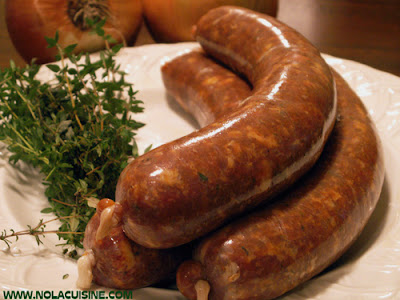There is nothing quite as soul satisfying (or messy) than a good old Roast Beef Po’ Boy in New Orleans. The best way to judge a good one is by the number of napkins you used to keep your chin semi-dry (Seriously, make sure you are stocked up on napkins.) My favorite place in New Orleans for a Roast Beef Po’ Boy is Parasol’s in the Irish Channel.
Like all other Po’ Boys, the most important ingredient isn’t the filling (although that is important as well, don’t get me wrong), but the bread. New Orleans Po’ Boy Bread, or Long Bread is light in the center with a wonderful flaky crust. It is almost impossible to find outside of New Orleans, which is why I’m working on a recipe for it, the one in the photo is my 3rd draft, it turned out very, very good, it just needs to be tweaked.
For my Creole Roast Beef I use an inexpensive, well marbled Chuck Roast, which is from the shoulder. Very tough, but extremely flavorful. I’ve found that braising works best for this cut, nice and slow. I did 4 hours, the object is for the meat to just fall apart…not by breathing on it, that would still be too tough, but by just looking at it. About a 10 second stare should do the trick.
I’ve found that I like a mixture of Beef Stock, Chicken Stock, and water for my braising liquid. The reason I don’t use straight Beef Stock is that I make an extremely rich one, and I reduce my gravy instead of using a thickening agent. When all is said and done, the gravy was just too much of a good thing, too intense. This way comes out just right. Extremely Beefy and delicious!
Here is the recipe:
Roast Beef Po’ Boy with Debris Gravy Recipe
For the Roast:
1 Beef Chuck Roast (this one was 2 ½ pounds)
2 Garlic Cloves thinly sliced
Diamond Crystal Kosher Salt & Black Pepper
Cayenne
3 Tbsp Lard or Vegetable Oil
1 Small Onion, Diced
1 Small Carrot, Diced
1 Cup Beef Stock
1 Cup Chicken Stock
Water if necessary
2 Tbsp Worcestershire Sauce
1 Tbsp Hot Sauce
2 Sprigs Fresh Thyme
1 Fresh Bay Leaf
Kosher Salt and Black Pepper to taste
Cut small slits into the roast, about every 3 inches, try not to pierce all the way to the bottom. Stuff the sliced garlic into the slits.
Season the Roast very liberally on all sides with the Salt & Black Pepper, season with Cayenne to your taste, I don’t use much.
Heat the fat in a heavy bottomed Dutch Oven over high heat, when the oil starts to smoke, wait a few more seconds, then carefully add the Roast cut side down. Brown very well on all sides, without burning it. Remove to a plate.
Drain off all but 1 Tbsp of the fat in the pan, add the onions and carrots, cook until the onions just start to brown, place the roast back in the pan, then add the stocks. Finish, if necessary, with enough water to bring the cooking liquid 3/4 of the way up the roast. Add the remaining ingredients. Bring to a boil, then back down to a simmer. Simmer covered for 3-4 hours or until the meat falls apart by staring at it.
For the Debris Gravy:
Carve the meat into very thin slices, it will be hard to do and will fall apart, that is good. All of the bits and pieces, that fall off are your Debris (pronounced DAY-bree.) Add all of the bits and chunks to you cooking liquid after skimming off the fat from the surface, keep the carved meat with a little liquid on a warm plate, covered tightly with plastic wrap. Bring the gravy to a full boil and reduce until it coats the back of a spoon. Season to taste with salt and pepper.
For the Po’ Boy:
New Orleans Style French Bread (Po’ Boys are generally about 9-10 inches long per sandwich. As you can see I made mine a bit smaller, shame on me.) Cut the bread 3/4 of the way through leaving a hinge (as seen in the background of the pic.) I find the hinge makes for slightly, easier eating.
Shredded Lettuce (or Cabbage a la Mothers)
Mayonnaise
Roast Beef (see above)
Debris Gravy
Slather the bread with a very generous portion of Mayonnaise on the inside of the upper and lower halves. Place about a cup of Shredded Lettuce on the bottom half. Cover the lettuce with a generous portion of the “sliced” Beef. Drown the beef with Debris Gravy.
Grab a stack of napkins, a cold beer and enjoy!
**Note – To make this a Ferdi Special a la Mother’s, add Good quality sliced ham underneath the Beef!
This Roast will make about 4 very generous Po’ Boys.
Other New Orleans Sandwich Recipes:
Muffuletta Olive Salad Recipe
Muffuletta Bread Recipe
Muffuletta Sandwich Recipe


